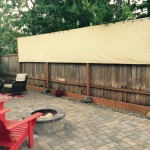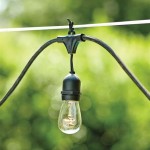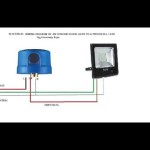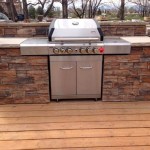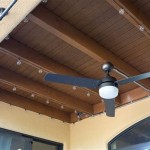Building an Outdoor Smoker: An Essential Guide
Building an outdoor smoker can be a fulfilling project that allows you to enjoy delicious smoked meats and impart a unique flavor to your food. However, creating a successful smoker requires careful planning and attention to essential aspects. Here's a comprehensive guide outlining the key steps and considerations for building an outdoor smoker:
1. Choosing the Right Materials
The materials you select for your smoker play a crucial role in its durability, heat retention, and smoking performance. The following materials are commonly used in smoker construction:
- Steel: Stainless steel or mild steel are durable and offer good heat retention, making them ideal for smokers.
- Brick or Concrete: Bricks or concrete blocks provide excellent insulation and heat retention, suitable for large-scale or insulated smokers.
- Wood: Cedar or oak planks are often used for vertical smokers due to their natural ability to absorb moisture and impart flavor to food.
2. Designing the Smoker
The design of your smoker should consider the size of your cooking needs, fuel type, and desired temperature range. Here are the main types of smokers to choose from:
- Vertical Smokers: These smokers have a vertical cooking chamber and can be compact or large-scale.
- Horizontal Smokers: Also known as offset smokers, these feature a separate firebox and cooking chamber, allowing for more precise temperature control.
- Pellet Smokers: These smokers use compressed wood pellets as fuel and offer convenient temperature regulation.
3. Building the Firebox and Cooking Chamber
The firebox is where the fuel burns, heating the smoking chamber. Ensure it's well-ventilated to prevent smoke accumulation and sized appropriately for the cooking chamber. The cooking chamber should be insulated to maintain the desired temperature and humidity during smoking.
4. Installing the Ventilation System
Proper ventilation is crucial for controlling the temperature and smoke flow within the smoker. Install a combination of intake and exhaust vents to regulate airflow and exhaust excess smoke and moisture.
5. Choosing the Fuel
The type of fuel you choose for your smoker will impact the flavor and temperature profile. Common fuel options include:
- Wood: Natural wood chips or chunks provide a traditional and flavorful smoke.
- Charcoal: Lump charcoal or briquettes offer high heat and can be easily controlled.
- Gas: Propane or natural gas smokers provide convenience and precise temperature control.
- Electricity: Electric smokers eliminate the need for fuel and offer consistent temperature regulation.
6. Controlling Temperature and Smoke
Maintaining the desired temperature and smoke level is essential for successful smoking. Use a smoker thermometer to monitor the temperature and adjust the fuel, ventilation, or smoker settings accordingly. Control smoke density by adjusting the fuel type, airflow, and smoke generator (if used).
7. Finishing and Curing
Once constructed, it's important to finish and cure your smoker. Apply a heat-resistant paint or coating to protect the metal surfaces from rust. Season the smoker by burning it at a high temperature for several hours to remove any impurities and create a non-stick surface.
By following these essential steps and paying close attention to the materials, design, ventilation, fuel, and temperature control, you can build a durable and efficient outdoor smoker that will elevate your culinary adventures and provide years of enjoyment.
Build Your Own Smoker Top Ideas For Diy Smoking Projects

9 Diy Smoker Plans For Building Your Own Beginner To Experienced Smoked Bbq Source

9 Creative Backyard Bbq And Outdoor Kitchen Ideas Homemade Smoker Smokehouse

How To Build A Smoker For Your Backyard Diy Bbq Plans

Perfect Backyard Smoker Build Diy Offset

23 Awesome Diy Smokehouse Plans You Can Build In The Backyard Ny Gun Forum

Pin On 15

Smokehouse Backyard Smokers Outdoor Smoker

How To Build A Brick Bbq Smoker Part 2
:max_bytes(150000):strip_icc()/smoker8faustman-fb71d42c9e19478c9a496e1fd91a6b8c.jpg?strip=all)
Build A Smokehouse Step By Instructions With Photos
Related Posts

